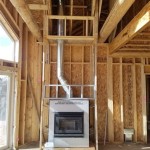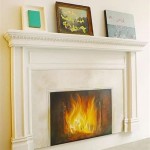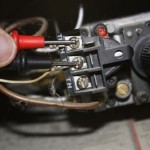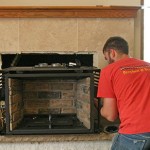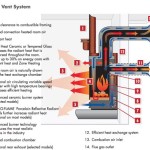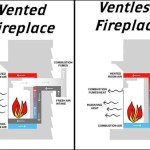Fireplace Mantel Beam: A Comprehensive Guide
The fireplace mantel beam serves as a significant focal point within a room, blending aesthetics with functionality. It provides a visual anchor above the fireplace, offering a surface for decorative items and often acting as a structural element supporting the surrounding architecture. Understanding the different aspects of fireplace mantel beams, from materials and styles to installation and safety considerations, is crucial for homeowners aiming to enhance their living spaces.
The selection of a suitable fireplace mantel beam involves careful consideration of various factors, including the existing architectural style of the home, the size and dimensions of the fireplace, and the desired aesthetic impact. A well-chosen mantel beam can seamlessly integrate with the room's design, adding character and value to the property. Conversely, an inappropriate selection can detract from the overall appearance and potentially pose safety hazards.
Material Selection and Characteristics
The material of a fireplace mantel beam profoundly influences its appearance, durability, and thermal properties. Common materials include wood, stone, and concrete, each exhibiting distinct advantages and disadvantages. Wood mantel beams offer warmth and versatility, available in various species with differing grain patterns and finishes. Popular choices include reclaimed wood, known for its rustic charm and unique character, as well as hardwoods like oak, maple, and cherry, valued for their strength and durability.
Stone mantel beams, such as limestone, granite, and marble, offer a more formal and elegant aesthetic. These materials are highly durable and fire-resistant, but they also tend to be heavier and more expensive than wood. Concrete mantel beams provide a modern and industrial look, often chosen for contemporary homes. Concrete can be molded into various shapes and textures, offering design flexibility, while also possessing good fire resistance.
When selecting a material, it is essential to consider the fire resistance of the chosen option. Certain wood species are more susceptible to ignition than others, and proper fireproofing treatments may be necessary to ensure safety. Stone and concrete are inherently non-combustible materials, making them inherently safer options near open flames.
Styles and Design Considerations
Fireplace mantel beams come in a wide array of styles, ranging from traditional to contemporary, allowing homeowners to customize their fireplace to match their personal preferences and the overall design of the room. Traditional styles often feature ornate carvings, intricate moldings, and aged finishes, reflecting the craftsmanship of past eras. These styles typically complement classic architectural designs and can add a sense of history and elegance to a space.
Contemporary styles, on the other hand, tend to be more minimalist and streamlined, with clean lines and simple geometric shapes. These styles often utilize modern materials and finishes, such as polished concrete or sleek metal accents. Contemporary mantel beams are well-suited for modern homes and can create a sense of sophistication and understated elegance.
Rustic styles embrace the natural beauty of raw materials, often featuring unfinished wood with visible knots and imperfections. Reclaimed wood is a popular choice for rustic mantel beams, adding character and a sense of history to the fireplace. Rustic styles are ideal for creating a warm and inviting atmosphere in a home, complementing a variety of interior design styles.
Installation and Safety Regulations
Proper installation of a fireplace mantel beam is critical for both aesthetic appeal and safety. The installation process typically involves securing the beam to the wall using appropriate mounting hardware and techniques. The specific methods will vary depending on the material of the beam, the construction of the wall, and any local building codes.
It is essential to maintain adequate clearance between the mantel beam and the firebox opening to prevent overheating and potential fire hazards. Building codes typically specify minimum clearance requirements, which must be strictly adhered to. Consulting with a qualified contractor or building inspector is highly recommended to ensure compliance with all applicable regulations.
When installing a mantel beam, it is vital to consider the weight of the beam and the load-bearing capacity of the wall. Heavier beams may require additional support to ensure stability and prevent sagging or collapse. Proper anchoring techniques and the use of appropriate fasteners are crucial for ensuring the long-term safety and stability of the installation.
Fireplace mantel beams contribute significantly to the overall ambiance and aesthetic appeal of a home. By carefully considering the material, style, and installation requirements, homeowners can select a mantel beam that complements their individual tastes and enhances the beauty of their living spaces. Prioritizing safety regulations and seeking professional advice when necessary will ensure a safe and visually appealing addition to any home.

Fireplace Mantel Barn Beam Wooden 8 X Rough Hewn Rustic Wood

Simple European Farmhouse Barn Beam Fireplace Mantel Makeover Open Doors Hearts

Quick Wood Beam Mantel Diy Project Barron Designs

Wood Beam Mantel Shelf 48 72 Floating Fireplace

Choose Your Material For Wood Box Beam Mantels

Diy Wood Beam Mantel

Collection Of Premium Wood Fireplace Mantels Dogberry

Why Wooden Fireplace Mantels Are Simply The Best

Beautiful Rustic Fireplace Mantels Made From Reclaimed Barn Beams

Barton 72 In W X 8 5 H Floating Vintage Wood Fireplace Mantel Wall Cap Shelf Beam Easy Mount Ash 95158 The Home Depot
Related Posts

